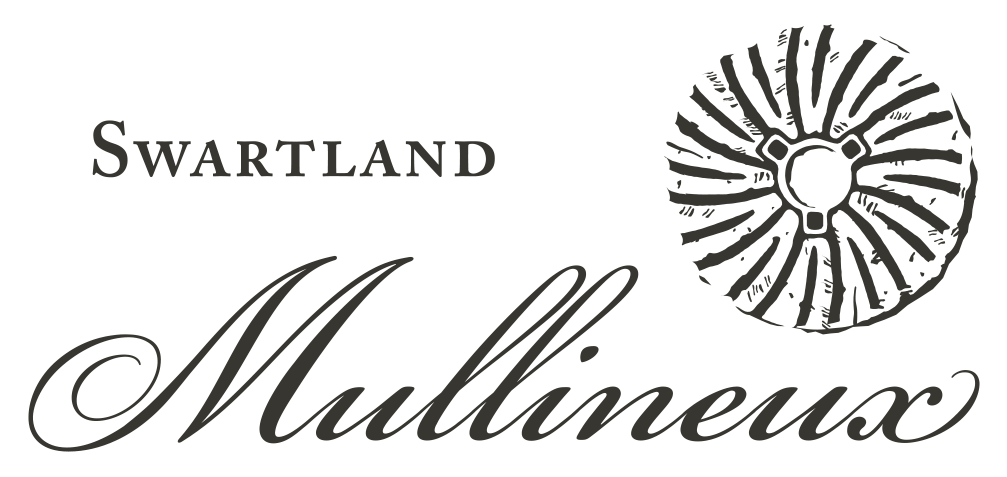Mullineux Single Terroir, `Granite` Swartland Chenin Blanc


Vintage: 2022
| Vintage | Product Code | Format | Closure | Availability |
|---|---|---|---|---|
| 2022 | MU106B22 | 6 x 75 | Natural Cork | Contact Us |
Producer
Founded by Chris and Andrea Mullineux in 2007, Mullineux is one of the most lauded wineries in South Africa, having been named ‘Winery of the Year’ five times by the Platter Guide (in 2014, 2016, 2019, 2020 and 2023). Chris and Andrea chose the town of Riebeek-Kasteel, just west of Malmesbury in the Swartland, due to its old vineyards planted on granite and schist soils. They reasoned that, with such quality fruit, they could make outstanding wines. It is an understatement to say they have been proved right.
The Swartland is warm and dry in the summer, benefitting from a cooling afternoon breeze from the Atlantic Ocean, which borders the region to the West. Disease pressure is low, which, in turn, means spraying is kept to a minimum. The fashion for monoculture in the 1970s and 1980s bypassed the Swartland. As a result, most of the vineyards that Chris and Andrea own, or lease are planted with numerous native species like fynbos. These provide a home for native insects, which act as predators of other insects that can damage the vines. Again, this enables spraying to be kept to a minimum.
The Mullineux Range boasts a Syrah, an ‘Old Vines’ White and a ‘Straw Wine’. The Syrah blends fruit from schist, iron and granite soils across a range of Swartland vineyards. 90% of the fruit is whole bunch fermented, with maceration extended to as long as seven weeks for some batches simply because of the quality of the tannins. This creates a lovely structure and balance to the wine, with the tannins corseting ripe and voluptuous fruit. The wine is aged in oak, 15% of which is new, for 14 months before bottling. The ‘Old Vines’ White is sourced from seven low-yielding (4-6 tonnes per hectare) vineyards in the Swartland. It is predominantly Chenin Blanc, blended with a touch of Semillon Gris, Clairette Blanche, Grenache Blanc, Viognier, and Verdelho. The winemaking is similar to the Single Terroir Chenins, using whole bunch pressing and fermentation in barrel with 100% malolactic. The resulting wine is aged for 11 months in a combination of old French oak 500-litre barrels and 2,000-litre foudre. Their ‘Straw Wine’ is made from old vine Chenin Blanc harvested at normal ripeness levels and air-dried for three to four weeks, concentrating the sugars, flavours and, most importantly, acidity. The wine is slowly pressed and fermented in old barrels for six to nine months, before natural settling and bottling. The resulting wine has an intense nose of dried fruit, marmalade, marzipan and honey. On the palate, it is powerful and complex, with around 300 grams per litre of residual sugar balanced by a vibrant acidity, leaving the wine tasting fresh and dry. Mullineux’s ‘Olerasay’ Straw Wine is undoubtedly one of the world's great sweet wines and incredibly rare. Produced from barrels which have been fractionally blended for the vintages 2008 through to 2022, it has layers of complexity, nuttiness and depth.
Vineyards
Fruit for the Granite Chenin Blanc is sourced from a 45-year-old dry-farmed bush vine vineyard named Eikelaan (“lane of Oak trees”). It is Mullineux’s highest altitude Granite-based site on the Paardeberg mountain. These decomposed granite soils have a layer of clay below the surface and a deep root system, protecting the vines from the region’s dry conditions. The resulting vines have denser canopies, which offer more shade and produce wines with great acidity and a flinty, stony aromatic profile.
Vintage
A cold, wet winter and cool spring conditions set the vineyards up for a very good growing season which was cool and long with no heat spikes, this contributed to the inviting phenolic balance, full palate and jubilant freshness
Vinification
Grapes were first chilled in Mullineux's cold room then pressed as whole bunches, before the juice was allowed to settle overnight. Minimal SO2 was added and, as with all their wines, no further additions were made. The juice was then racked to barrel for fermentation which took place with indigenous yeasts and lasted for about four weeks. The wine was left in barrels, on its lees, until spring. In total, the wine was spent 11 months in fourth fill French oak barrels. The barrels were racked and blended just before the following vintage and bottled unfiltered.
Tasting Notes & Technical Details
There is a characteristic flinty edge, with lifted citrus aromatics and notes of blossom, spiced apple and green tea on the nose. The palate is vibrant, revealing mouth-watering acidity and a refreshing salinity, thanks to 2022's cooler evenings.
Alcohol (ABV)
12.5%
Acidity
6 g/l
Residual Sugar
1.8 g/l
pH
3.3
Other wines from this producer
Producer | Wine | Product Code | Features | Style | |
|---|---|---|---|---|---|
| Signature | Old Vines Swartland White Blend | MU103 | W | Factsheet | |
| Swartland Syrah | MU104 | R | Factsheet | ||
| Signature Straw Wine | MU105 | Sw | Factsheet | ||
| Olerasay 3º Straw Wine Chenin Blanc | MU117 | Sw | |||
| Single Terroir | `Granite` Swartland Syrah | MU108 | R | Factsheet | |
| `Schist` Swartland Syrah | MU109 | R | |||
| `Iron` Swartland Syrah | MU110 | R | Factsheet | ||
| `Schist` Swartland Chenin Blanc | MU115 | W | Factsheet |